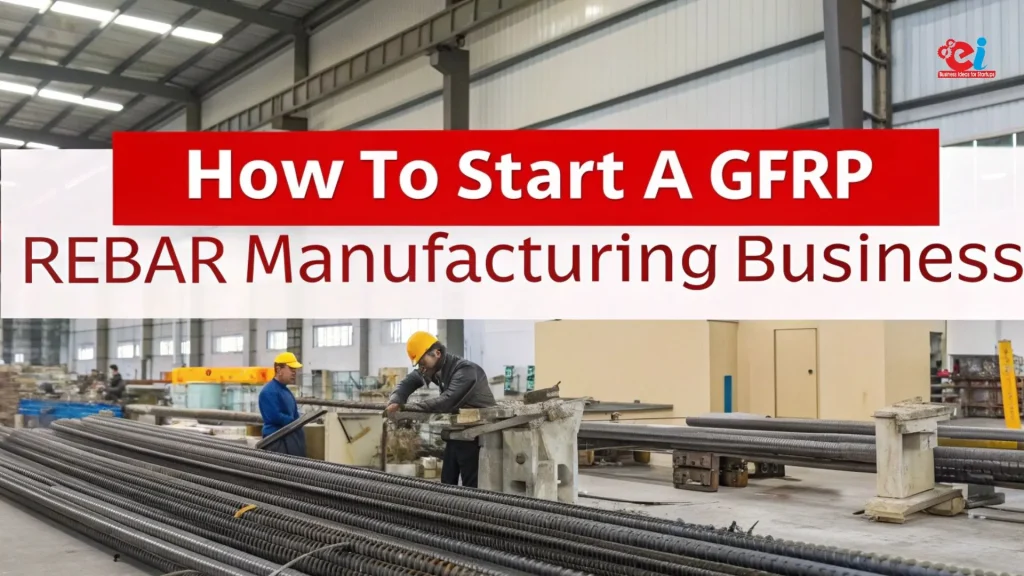
The Aluminium Wire & Cables Manufacturing Industry plays a critical role in powering modern infrastructure. With rapid urbanization, electrification of rural areas, and rising demand for reliable power distribution systems, aluminium wires and cables have emerged as cost-effective and lightweight alternatives to traditional copper wiring. Their excellent conductivity, lower weight, and corrosion resistance make them indispensable across industries—from construction and utilities to telecom and automotive sectors. Entrepreneurs exploring industrial manufacturing opportunities will find that the Aluminium Wire & Cables Manufacturing Industry offers long-term profitability, scalability, and high demand in both domestic and export markets.
Growing Demand and Industry Overview
The global market for aluminium wires and cables is expected to grow steadily, driven by infrastructure projects, smart city developments, and electric vehicle (EV) expansion. India, being one of the world’s largest consumers of electricity, has seen significant investments in the transmission and distribution (T&D) segment. These developments directly boost the Aluminium Wire & Cables Manufacturing Industry.
Aluminium is 60% lighter and significantly cheaper than copper, making it the preferred choice for overhead power lines, building wiring, and telecom cables. With government initiatives like “Power for All,” rural electrification, and growing private sector investments, the demand for aluminium-based electrical solutions continues to rise, especially in tier-2 and tier-3 cities.
Applications Across Key Sectors
The Aluminium Wire & Cables Manufacturing Industry serves a wide variety of end users. Some of the primary application segments include:
-
Power Distribution – Overhead conductors, underground power cables, and substation connectors
-
Construction and Real Estate – Residential, commercial, and industrial buildings for internal wiring
-
Telecommunications – Telephone and coaxial cables
-
Automotive – Lightweight wiring harnesses for vehicles
-
Electronics – Armoured and flexible cables for electrical appliances and panels
As industries grow increasingly digital and electricity-dependent, aluminium conductors continue to replace their copper counterparts across multiple domains.
Types of Aluminium Cables and Wires
Understanding product variety is crucial in the Aluminium Wire & Cables Manufacturing Industry. Major types include:
-
AAC (All Aluminium Conductors) – Lightweight, corrosion-resistant wires for overhead power transmission
-
AAAC (All Aluminium Alloy Conductors) – Stronger and more durable, used in high-voltage lines
-
ACSR (Aluminium Conductor Steel Reinforced) – Combined with steel for added strength
-
XLPE Insulated Cables – Used in underground installations and buildings
-
Armoured Cables – Provide mechanical protection, suitable for industrial applications
By catering to different customer needs and voltage levels, manufacturers can target multiple market segments and reduce dependency on a single product line.
Production Process Overview
Setting up a Aluminium Wire & Cables Manufacturing Industry unit involves a systematic production process:
-
Raw Material Preparation – Aluminium ingots or rods are inspected and loaded
-
Wire Drawing – Aluminium is passed through drawing machines to achieve the desired diameter
-
Annealing – Softens the drawn wire for flexibility and durability
-
Stranding and Twisting – Multiple wires are twisted together for strength
-
Insulation and Sheathing – PVC, XLPE, or rubber compounds are applied depending on the product specification
-
Armouring (if applicable) – Steel or aluminium strips are wrapped around the insulated cable
-
Quality Testing – Wires are tested for conductivity, insulation resistance, and mechanical properties
-
Coiling, Packaging, and Dispatch – Finished products are coiled and packaged for delivery
Modern automation and quality control systems ensure consistent performance and industry compliance.
Machinery and Setup Requirements
For a small to medium-scale Aluminium Wire & Cables Manufacturing Industry unit, key equipment includes:
-
Rod breakdown and wire drawing machines
-
Annealing furnaces
-
Stranding machines and bunchers
-
Insulation extruders
-
Armouring and sheathing lines
-
Cable coiling, cutting, and packing machines
-
Testing equipment – for high voltage, insulation, and tensile strength
A facility of approximately 12,000 to 20,000 sq. ft. is typically required depending on automation and production capacity.
Raw Materials Used in Production
Key raw materials used in the Aluminium Wire & Cables Manufacturing Industry include:
-
Aluminium rods or EC-grade aluminium ingots
-
Insulation compounds like PVC, XLPE, and PE
-
Armouring materials – galvanised steel or aluminium strips
-
Packaging materials – cable drums, boxes, and wrapping films
-
Cooling water, lubricants, and electrical power
Sourcing high-quality EC-grade aluminium ensures conductivity and product longevity, which are critical for retaining customer trust.
Investment and Financial Insights
Starting a Aluminium Wire & Cables Manufacturing Industry plant requires a sizable initial investment, largely depending on scale:
-
Land & infrastructure: ?50 lakh – ?1 crore
-
Machinery and tools: ?1.5 – ?3 crore
-
Raw material inventory: ?50 – ?70 lakh
-
Labor and operations (initial months): ?20 – ?30 lakh
-
Utility and licensing expenses: ?10 – ?15 lakh
Thus, a medium-sized unit may need a total investment of around ?2.5 – ?4 crore. Profit margins can range from 15% to 30%, especially with value-added cables and direct contracts with power utilities or builders. ROI is usually achievable within 3 years of operation.
Licensing, Compliance, and Quality Certifications
To operate legally in the Aluminium Wire & Cables Manufacturing Industry, the following approvals and licenses are necessary:
-
Company Registration and GST
-
Pollution Control Board clearance
-
Factory License and Electricity Board approval
-
BIS Certification (IS 8130, IS 694, etc.)
-
ISO 9001 and ISO 14001 (optional but preferred for exports)
-
Bureau of Energy Efficiency (BEE) ratings for energy-saving cable types
Maintaining rigorous testing and documentation will not only ensure compliance but also improve product acceptability in global markets.
Marketing and Sales Strategy
To succeed in the Aluminium Wire & Cables Manufacturing Industry, manufacturers must build a robust distribution network and strategic alliances. Effective marketing strategies include:
-
Partnering with real estate developers and contractors
-
Collaborating with state electricity boards and telecom providers
-
Distributing through electrical wholesale networks
-
Listing products on B2B platforms like IndiaMART and TradeIndia
-
Showcasing at trade expos, exhibitions, and industry fairs
-
Running digital campaigns and LinkedIn outreach to attract commercial clients
Building long-term relationships through consistent product quality and timely deliveries will ensure repeat business and market growth.
Government Support and Incentives
Government initiatives supporting the Aluminium Wire & Cables Manufacturing Industry include:
-
Credit Linked Capital Subsidy Scheme (CLCSS)
-
MSME Registration Benefits – tax concessions, easier loans
-
PLI Scheme for manufacturing and electrical equipment
-
Technology Upgradation Funds for modernization
-
Export Promotion Programs under DGFT
-
Electricity duty exemptions in some industrial zones
Utilizing these schemes can lower capital costs and improve cash flow during early stages of the business.
Conclusion
The Aluminium Wire & Cables Manufacturing Industry is deeply intertwined with the growth of energy infrastructure, digital connectivity, and modern construction. Its relevance is set to expand as countries adopt smarter, safer, and greener power distribution networks. Entrepreneurs venturing into this sector can build a scalable business with consistent demand, recurring orders, and solid margins. By investing in quality manufacturing practices, regulatory compliance, and innovative marketing, you can tap into the full potential of the Aluminium Wire & Cables Manufacturing Industry and power progress—literally and economically.
Niir Project Consultancy Services
An ISO 9001:2015 Company
106-E, Kamla Nagar, Opp. Spark Mall,
New Delhi-110007, India.
Email: npcs.ei@gmail.com , info@entrepreneurindia.co
Tel: +91-11-23843955, 23845654, 23845886, 8800733955
Mobile: +91-9811043595
Website: www.entrepreneurindia.co , www.niir.org





